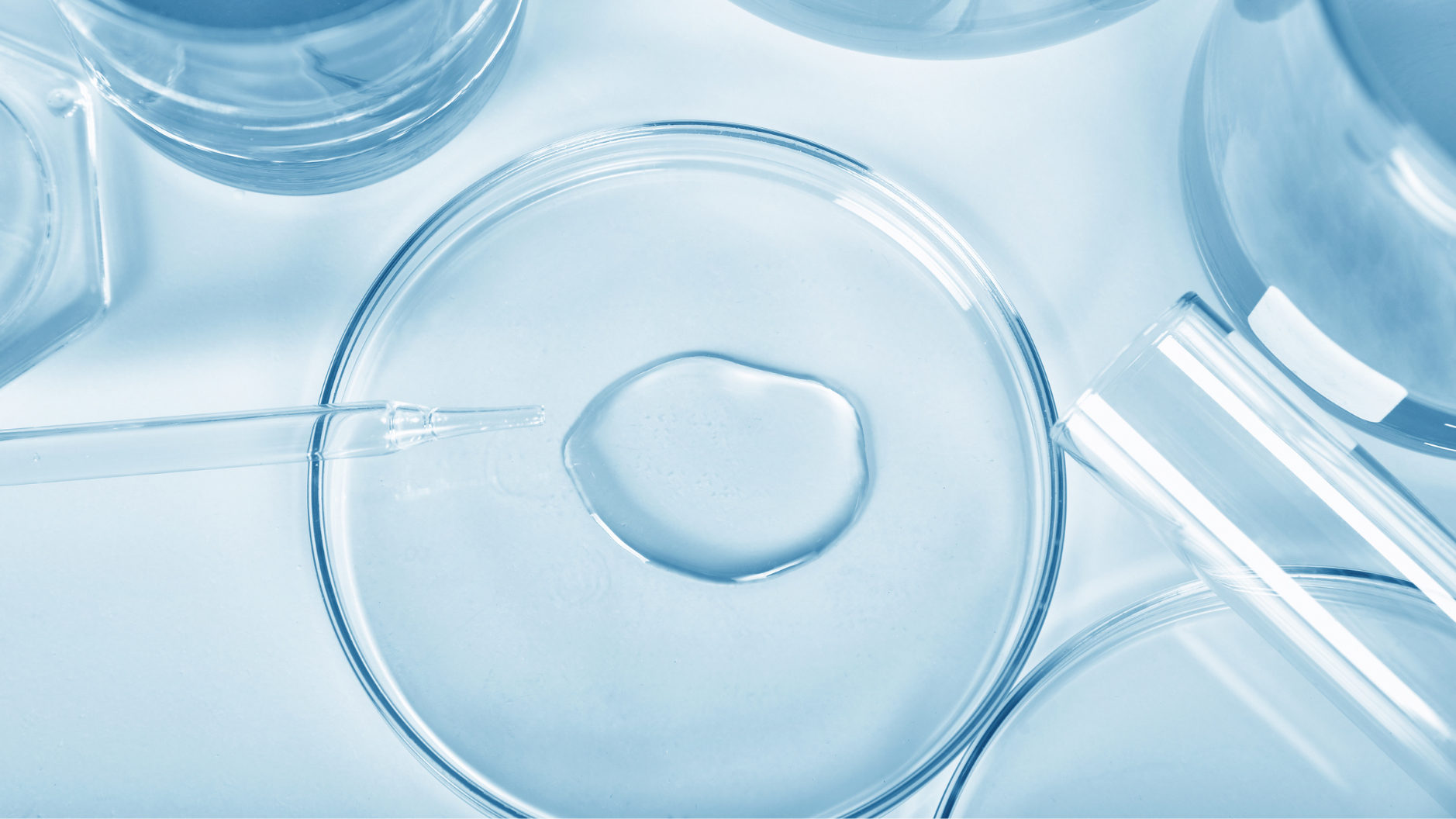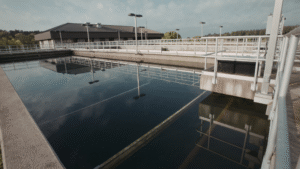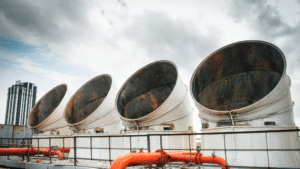Behind every effective treatment program is a chemical formulation that meets stringent Environmental Protection Agency (EPA), Safe Drinking Water Act (SDWA), and NSF standards—without compromising performance. For chemical blenders like ETI, regulatory compliance isn’t just a goal. It’s a foundational pillar of responsible, high-performing chemistry and the water treatment partners we serve.
In this article, we break down the water treatment regulations that matter, best practices in compliance, and how forward-thinking chemical selection and program design safeguard both public health and the environment.
Key Takeaways
- Understanding and adhering to water treatment regulation standards, including EPA guidelines and the Safe Drinking Water Act (SDWA), is essential for ensuring the safety and efficacy of water treatment chemicals.
- Implementing rigorous quality control measures, accurate labeling, and thorough documentation is vital for maintaining compliance and safeguarding human health.
- Continuous collaboration with regulatory bodies and a commitment to eco-friendly practices enhance regulatory compliance, promote sustainability, and reduce environmental risks.
Understanding Regulatory Standards
Navigating the maze of regulatory standards is the secret to safe, effective water treatment, whether it be industrial or drinking water applications. Key regulatory bodies like the Environmental Protection Agency (EPA) set national standards to protect water quality and human health.
For chemical blenders, it’s embedded that operating within regulatory frameworks isn’t just about avoiding penalties but about doing the right thing. Ensuring that discharged pollutants meet environmental safety thresholds reduces operational costs, minimizes environmental impact, and contributes to a healthier future.
Safe Drinking Water Act (SDWA) Compliance
The Safe Drinking Water Act (SDWA) is a cornerstone of drinking water safety in the United States. It mandates strict testing and approval processes for chemicals used in public water systems.
EPA regulations under the SDWA—such as the Surface Water Treatment Rule—are designed to reduce microbial contaminants like Giardia and viruses in surface water and ground water influenced by surface water. These standards ensure treated water meets safety thresholds across water utilities, reducing the risk of waterborne disease.
EPA Guidelines and Maximum Contaminant Levels (MCLs)
The EPA’s National Primary Drinking Water Regulations (NPDWR) enforce Maximum Contaminant Levels (MCLs) for a range of chemicals. These limits protect public health by ensuring harmful substances don’t exceed safe thresholds in drinking water.
Chemical manufacturers and blenders must align formulations with these standards and the treatment techniques they utilize. Consistent monitoring, testing, and verification help prevent non-compliance and ensure both consumer safety and environmental protection.
National Sanitation Foundation (NSF) Requirements
The National Sanitation Foundation (NSF) sets critical safety standards for chemicals used in drinking water systems. Two of the most relevant standards for chemical blenders are:
NSF/ANSI Standard 60 – Drinking Water Treatment Chemicals: Health Effects
This drinking water standard applies to any chemical used to treat potable water—such as scale inhibitors, corrosion control additives, coagulants, disinfectants, and pH adjusters. To meet Standard 60, each formulation must:
- Undergo toxicological evaluation of all ingredients, including impurities and contaminants.
- Pass product-specific testing to ensure no adverse health effects from expected dosages.
- Stay below established maximum use levels (MULs) to prevent unsafe exposure to regulated contaminants (e.g., lead, arsenic, barium).
- Include manufacturing and batch documentation, including ingredient traceability and process controls.
NSF/ANSI Standard 61 – Drinking Water System Components: Health Effects
This standard governs materials that come into contact with drinking water—not the treatment chemicals themselves, but equipment and components (like pipes, tanks, valves, or resin coatings) used in water treatment systems. Chemical blenders generally ensure compatibility with these components but don’t typically certify under Standard 61 unless they’re also manufacturing system hardware.
What This Means for ETI and Our Clients
When ETI formulates a product for use in potable water systems, we:
- Select ingredients that are either NSF 60-certified or already evaluated as safe for use in public water systems.
- Ensure dosages remain within safe and approved limits—which often means adjusting concentrations or reformulating to stay within drinking water MULs.
- Provide supporting documentation (COAs, SDSs, formulation specs) that can be submitted for third-party NSF certification if required by the client or jurisdiction.
Some water utilities or state regulations require NSF 60 certification for all treatment chemicals, especially those in contact with drinking water post-treatment. ETI partners with clients to navigate these rules and, when necessary, provides assistance with NSF certification pathways for custom formulations.
Key Components of Regulatory-Compliant Chemical Formulations
Creating a regulatory-compliant water treatment product means paying close attention to:
1. Ingredient Safety and Efficacy
ETI conducts regular risk assessments and uses NSF-approved components that minimize health hazards. Every input to one of our chemical formulations is screened for effectiveness, toxicity, and environmental impact.
Safety protocols—including SDS access, PPE guidelines, and safe handling instructions—are baked into every product support package to help our clients manage risk responsibly when it comes to drinking water quality.
2. Labeling and Documentation
All labels must clearly list active ingredients, hazards, and handling instructions. Robust documentation—including batch records, Certificates of Analysis (COAs), and SDSs—provides a clear compliance trail for inspections and audits.
3. Quality Control Measures
ETI applies rigorous QA/QC protocols to ensure that every chemical batch meets the highest standards. Instruments are routinely calibrated, and every formulation is tested for consistency and reliability.
Environmental Protection Through Compliance
Environmental stewardship is a key component of meeting industry standards in water treatment. Federal and state agencies—including the EPA and the Resource Conservation and Recovery Act (RCRA)—enforce regulations that limit the environmental impact of chemical use, discharge, and disposal on drinking water quality. Compliance with these standards not only helps companies avoid penalties but also plays a critical role in preserving ecosystems and public health.
Minimizing Environmental Impact
Water treatment formulations must be designed with downstream effects in mind. Many jurisdictions regulate:
- Discharge limits for hazardous substances like heavy metals, phosphonates, and surfactants.
- Persistence and toxicity of treatment byproducts.
- Biodegradability of residual chemicals entering municipal or natural waterways.
To meet these requirements, companies are shifting toward low-toxicity, biodegradable, and non-bioaccumulative ingredients wherever feasible. This reduces the risk of long-term environmental contamination and simplifies compliance with National Pollutant Discharge Elimination System (NPDES) permits.
Sustainable Chemical Practices
Green chemistry principles are increasingly shaping regulatory expectations. These practices focus on:
- Reducing the volume and hazard level of inputs.
- Designing formulations with end-of-life in mind, minimizing the need for intensive treatment or disposal.
- Selecting raw materials that are renewable, less toxic, and degrade safely in the environment and in drinking water.
In many cases, states such as California or New York impose stricter sustainability requirements—making it essential for manufacturers to stay current with both federal and regional standards.
Waste Management and Disposal Regulations
While end users typically handle the disposal of water treatment residuals, chemical manufacturers and blenders must still ensure their products can be safely and legally disposed of. Compliance with RCRA and local hazardous waste laws requires:
- Accurate labeling and classification of waste profiles.
- Providing end users with clear handling and disposal guidance.
- Reducing the generation of hazardous byproducts during application or storage.
Blenders must also ensure that containers, spill kits, and transportation methods align with EPA and Department of Transportation (DOT) standards.
Health and Safety as an Extension of Environmental Compliance
Environmental regulations also intersect with human health—particularly when chemical exposure poses risks to operators, maintenance personnel, or the general public. Regulatory agencies require:
- Risk assessments for formulations that include corrosive, reactive, or toxic components.
- Clear labeling under OSHA’s Hazard Communication Standard (HCS).
- Availability of SDSs, PPE recommendations, and emergency protocols.
Safe formulations used for managing drinking water quality don’t just protect the environment—they safeguard the people working with them.
Best Practices to Keep Up With Water Treatment Regulations
Regulatory compliance in drinking water treatment is a continuous process that demands consistency, vigilance, and industry awareness. Companies that excel in compliance management embed best practices into every level of their operations.
1. Ongoing Training and Education
Staying current with EPA, SDWA, OSHA, and NSF regulations requires ongoing education. Regular training helps teams understand evolving compliance requirements, implement safe handling procedures, and respond to inspections with confidence.
Training can take many forms, including internal workshops, continuing education courses, or formal certifications like the Certified Water Technologist (CWT). To support this, ETI offers compliance-focused training through programs like ETI Bootcamp and a structured 13-week CWT preparation track—helping partners strengthen their internal compliance capabilities.
2. Robust Documentation and Recordkeeping
Thorough, up-to-date documentation is essential for demonstrating compliance during audits or inspections. Best practices include:
- Keeping SDSs, COAs, formulation records, and QA logs accurate and accessible.
- Implementing digital systems for real-time document tracking and version control.
- Ensuring records meet retention standards set by regulatory bodies.
Proper documentation not only supports regulatory reporting but also improves internal traceability and customer transparency.
3. Rigorous QA/QC Oversight
A strong quality assurance and control program helps ensure every product meets both performance and regulatory expectations. Key components include:
- Regular batch testing and verification against specifications.
- Scheduled calibration and maintenance of testing equipment.
- Internal compliance checks to flag and resolve potential issues proactively.
QA/QC measures are crucial for maintaining consistency, especially in industries where small deviations can lead to major risks.
How ETI Blends Compliance Into Every Chemical Program
At ETI, compliance isn’t an afterthought—it’s engineered into every batch. With nearly 40 years of experience in custom chemical blending for industrial water treatment, we design formulations with regulatory alignment from the start.
We use NSF-certified ingredients, adhere to EPA MCLs, and document every step of the process with precision and in line with our ISO 9001 certification. From label accuracy to SDS availability, our team ensures your water quality management program checks every regulatory box—so you can focus on results.
Let’s Blend Smarter
Looking for a chemical partner that builds regulatory confidence into every formulation? ETI has your back. Our production systems, quality assurance protocols, and regulatory expertise ensure your water treatment techniques are not only effective—but fully compliant.
Contact ETI to get started.
Frequently Asked Questions
What is the Safe Drinking Water Act (SDWA)?
The SDWA establishes national standards for drinking water quality in the U.S. It mandates rigorous testing and regulatory oversight of chemicals used in public water systems.
Why is regulatory compliance important in water treatment?
Compliance ensures water safety, protects public health, reduces liability, and prevents environmental damage. It’s essential for maintaining trust and long-term system performance.
How does ETI support regulatory compliance?
ETI provides NSF-compliant formulations, full documentation (SDSs, COAs, batch records), and ongoing education to help clients meet all local, state, and federal standards.
What are the benefits of using eco-friendly formulations?
Eco-friendly products reduce environmental impact, simplify disposal, and often make compliance easier by minimizing hazardous byproducts and waste.
How can collaboration with regulatory bodies improve compliance?
Working with agencies like the EPA and NSF helps companies anticipate changes, clarify complex requirements, and ensure safer, smarter chemical programs.





